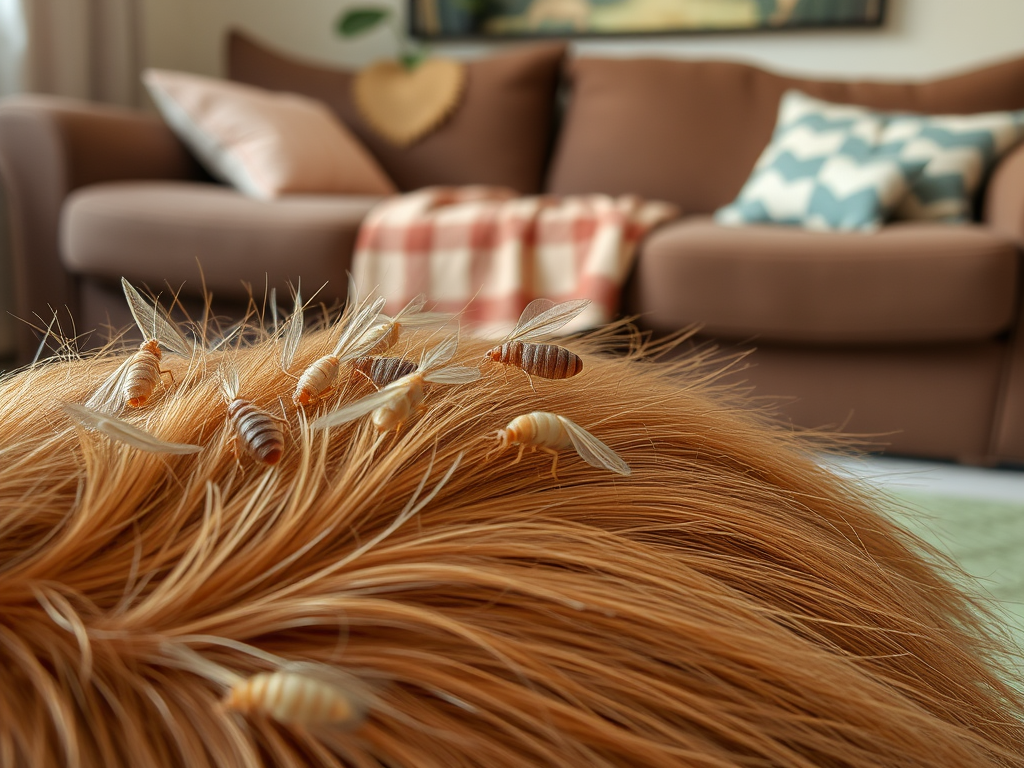Flea bugs are often mistaken for their more infamous counterparts, bed bugs. This confusion can lead to ineffective treatment and ongoing discomfort, as the two pests have striking similarities. Understanding these look-alikes is vital, not only to resolve infestations but also to mitigate potential health risks to your family and pets. Flea bugs, while relatively common, have unique characteristics that require attention. Unraveling the mysteries surrounding these pests will empower you with the knowledge needed to handle any confrontations with them effectively. In this article, we will explore the nature of flea bugs, their lifecycle, differences from bed bugs, and preventive measures to keep your living environment pest-free.
Understanding Flea Bugs

Flea bugs belong to the order Hemiptera and are typically found in regions that accommodate warm-blooded hosts. They are usually small, ranging from 1 to 3 mm in length, and exhibit a brownish hue. These omnipresent irritants thrive in various environments, including carpets, pet bedding, and even humans. As part of their survival strategy, flea bugs possess a unique body structure that allows them to jump efficiently from host to host. This adaptability is a significant factor in their enduring presence in households. Recognizing what flea bugs are and where they typically dwell is the first step in controlling them effectively.
Identifying flea bugs correctly is essential for effective pest control. They are often confused with bed bugs, but subtle differences can aid in identification. Here are some key physical traits to look for:
- Size: Flea bugs are generally smaller than bed bugs, measuring roughly 1 to 3 mm in length.
- Color: They have a brownish color, while bed bugs appear reddish-brown after feeding.
- Body Shape: Flea bugs have a more elongated and slim shape compared to the flattened body of bed bugs.
Differences Between Flea Bugs and Bed Bugs

While both flea bugs and bed bugs can cause discomfort through bites, their behaviors and habitats are quite distinct. Flea bugs prefer to dwell in areas frequented by both humans and animals, making them more versatile in their feeding habits. Conversely, bed bugs are more specific in their needs, primarily infesting areas close to human sleeping quarters. Understanding these differences is crucial in pest management. Here are some factors to consider:
- Habitat: Flea bugs can live in carpets and upholstery, while bed bugs focus on beds and furniture.
- Feeding Patterns: Flea bugs tend to jump on hosts, feeding sporadically, while bed bugs feed slowly and become engorged.
- Behavior: Flea bugs are more active during the day; bed bugs are nocturnal.
The similarities between flea bugs and bed bugs can lead to misconceptions, which often complicate pest control efforts. Many people incorrectly assume that all bug bites originate from one pest, leading to misdiagnosis and ineffective treatments. By addressing these misconceptions, we can promote better practices in identification and care. Highlighting these similarities are critical for raising awareness:
| Feature | Flea Bugs | Bed Bugs |
|---|---|---|
| Size | 1-3 mm | 4-5 mm |
| Color | Brown | Reddish-brown |
| Feeding Time | Daytime | Nocturnal |
| Jumping Ability | Excellent | Poor |
Lifecycles of Flea Bugs
Understanding the lifecycle of flea bugs can provide valuable insights into how infestations develop. It includes several stages: eggs, larvae, pupae, and adults. Each stage has its unique characteristics and needs. Flea bugs can lay hundreds of eggs at a time, which can quickly lead to larger infestations if left unchecked. Within just a few weeks, the larvae emerge, followed by pupation, before reaching adulthood. Understanding this lifecycle can aid in implementing effective pest control strategies.
Comparing the lifecycles of flea bugs and bed bugs reveals some interesting differences. Bed bugs have a slower reproduction rate compared to flea bugs, which can proliferate rapidly in suitable conditions. Recognizing this can guide treatment options effectively. Key lifecycle comparisons include:
- Egg Quantity: Flea bugs can lay more eggs at once than bed bugs.
- Development Speed: Flea bugs typically develop faster than bed bugs.
- Longevity: Adult bed bugs can survive longer without feeding than adults flea bugs.
Signs of Infestation
Identifying an infestation early can be crucial in managing flea bugs. Common signs include visible bugs, flea dirt (small black specks), and skin irritation from bites. Adult flea bugs may be seen jumping around, especially in areas where pets sleep. They are more than just a nuisance; their bites can lead to allergic reactions and even infections if scratched too harshly. It’s essential to monitor your living spaces for these signs to act quickly when needed.
Individuals should know how to spot bed bugs to minimize confusion during an infestation. Bed bugs leave unique signs, including:
- Rusty stains on sheets from their blood meals.
- Dark spots of excrement clustered in small areas.
- Small, white eggs grouped around crevices and seams.
Treatment Options
When faced with a flea bug infestation, various treatment methods can be employed. These treatments range from home remedies to professional pest control services. Home remedies can include thorough vacuuming, washing linens in hot water, and employing natural repellents. However, severe infestations often require professional intervention. Here are the two primary approaches:
- Professional Pest Control: Offers a comprehensive approach that targets all life stages of flea bugs.
- DIY Methods: Cost-effective but may require persistence and thoroughness for effective results.
Deciding between professional pest control and DIY methods can depend heavily on the severity of the infestation. While professionals typically have access to more robust solutions and experience, DIY methods can be suitable for minor issues. Here’s a breakdown of pros and cons:
- Professional Methods:
- Pros: Effective, thorough, often one-time treatment.
- Cons: Can be expensive.
- DIY Methods:
- Pros: Cost-effective, flexible timing.
- Cons: May require multiple treatments, potential for incomplete eradication.
Prevention Tips
Preventing flea bugs is, of course, far easier than treating them. Here are several tips to help keep your home pest-free:
- Regularly vacuum floors and upholstery.
- Wash bedding and clothing in hot water routinely.
- Seal any cracks and crevices around your home.
- Keep pets treated with vet-recommended flea products.
- Declutter areas to minimize hiding spots.
Conclusion
Recognizing the differences between flea bugs and bed bugs is critical for effective pest management. Armed with knowledge about their characteristics, lifecycles, and treatment options, you can tackle potential infestations confidently. Early identification and swift action can save you from discomfort and the hassle of extended pest control processes. The key takeaway is that an informed approach will decrease the likelihood of future problems. Familiarizing yourself with your home environment can ensure that both your family and pets remain safe and healthy.
Frequently Asked Questions
- What are flea bugs? Flea bugs are small insects that often resemble bed bugs but belong to a different family and have different behaviors and habitats.
- How can I tell if I have flea bugs or bed bugs? Look for differences in bite patterns and physical characteristics; flea bugs are typically more slender and have longer legs suitable for jumping, while bed bugs are broader and more flat.
- Are flea bug bites harmful? Flea bug bites can cause itching and irritation, but they are not typically dangerous unless an allergic reaction occurs.
- What can I do to prevent infestations? Regular cleaning, sealing cracks and crevices, and keeping pets treated for fleas can help prevent infestations of flea bugs.
- Can I treat flea bugs myself? Yes, there are many DIY methods and products available; however, for severe infestations, professional help is recommended.
